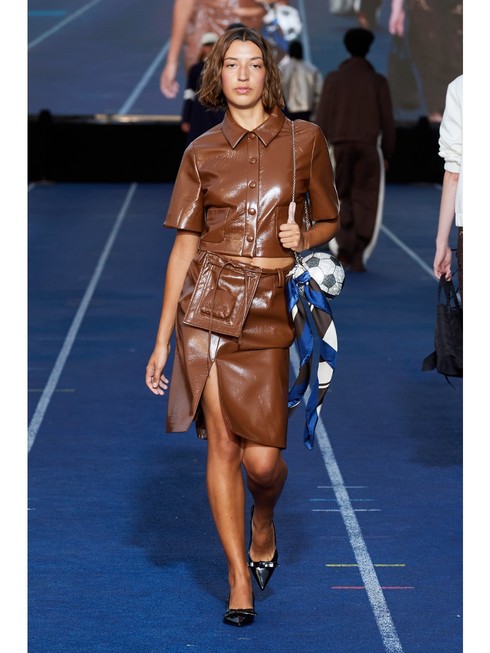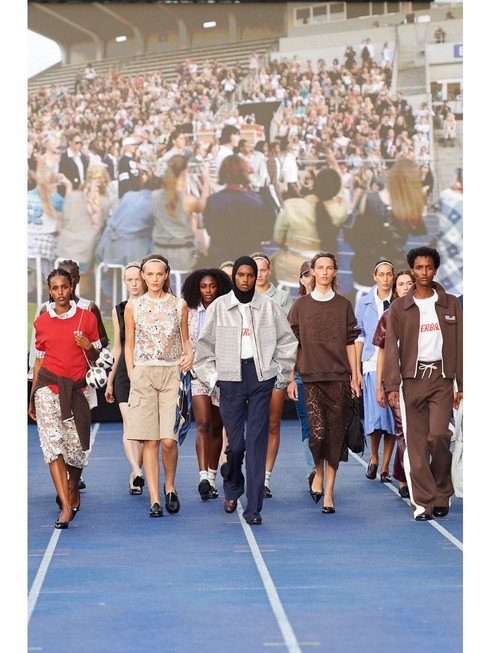An interview with the Garment about their SS25 runway show and collection
Written by Ulrika LindqvistThe . Garment showed their ss25 collection in the courtyard of Thorvaldsens Museum, the garments complementing the colors of the painted walls. Before the show, we talked to creative director Charlotte Eskildsen about her inspirations and challenges with the collection and runway show.
Ulrika Lindqvist: Please tell us about the process in creating the ss25 runway show?
Charlotte Eskildsen: Creating a runway show starts with developing a concept and mood boards to visualize the theme. The I create sketches, prototypes, and final garments. Selecting the venue is very emotional and for me the biggest task. Assembling my team is also very close to my heart, it involves casting models, stylists, and music and lighting planners.
UL: How did you choose the location for the runway show?
CE: I wanted a space that was inspired by art. Thorvaldsens Museum, the first contemporary art museum in Denmark. Founded by Bertel Thorvaldsen, the first international art student from Copenhagen appointed by the art academy at the age of eleven, the museum symbolizes a long-standing tradition of artistic excellence. After studying in Rome, Thorvaldsen returned to Copenhagen to create this iconic institution, which continues to inspire art students from around the world. Today, these students gather in the museum's courtyard to draw and be inspired, much like the guests at our upcoming show.
UL: What does the SS25 collection represent and what was the main inspiration for his collection?
CE: The . Garment Spring Summer 25 is inspired by the craft of Thorvaldsens Museum. The sculptures symbolizes the laces and langeri fabrics sourced from flea markets in France, where my second home is in a Medival City close to the sea, adding a touch of history and romance to each garment.
UL: What was the biggest challenge creating your ss25 collection?
CE: Sourcing the materieals.
UL: How would you describe the The . Garment customer?
CE: They are empowered women, who value both style and substance. The women has a desire to make a meaningful impact on the world. They are drawn to The . Garment for its fusion of Scandinavian minimalism and timeless design.
UL: What can we expect from The . Garment in the future?
CE: We do have a special thing planned. But its too early to tell ….






































